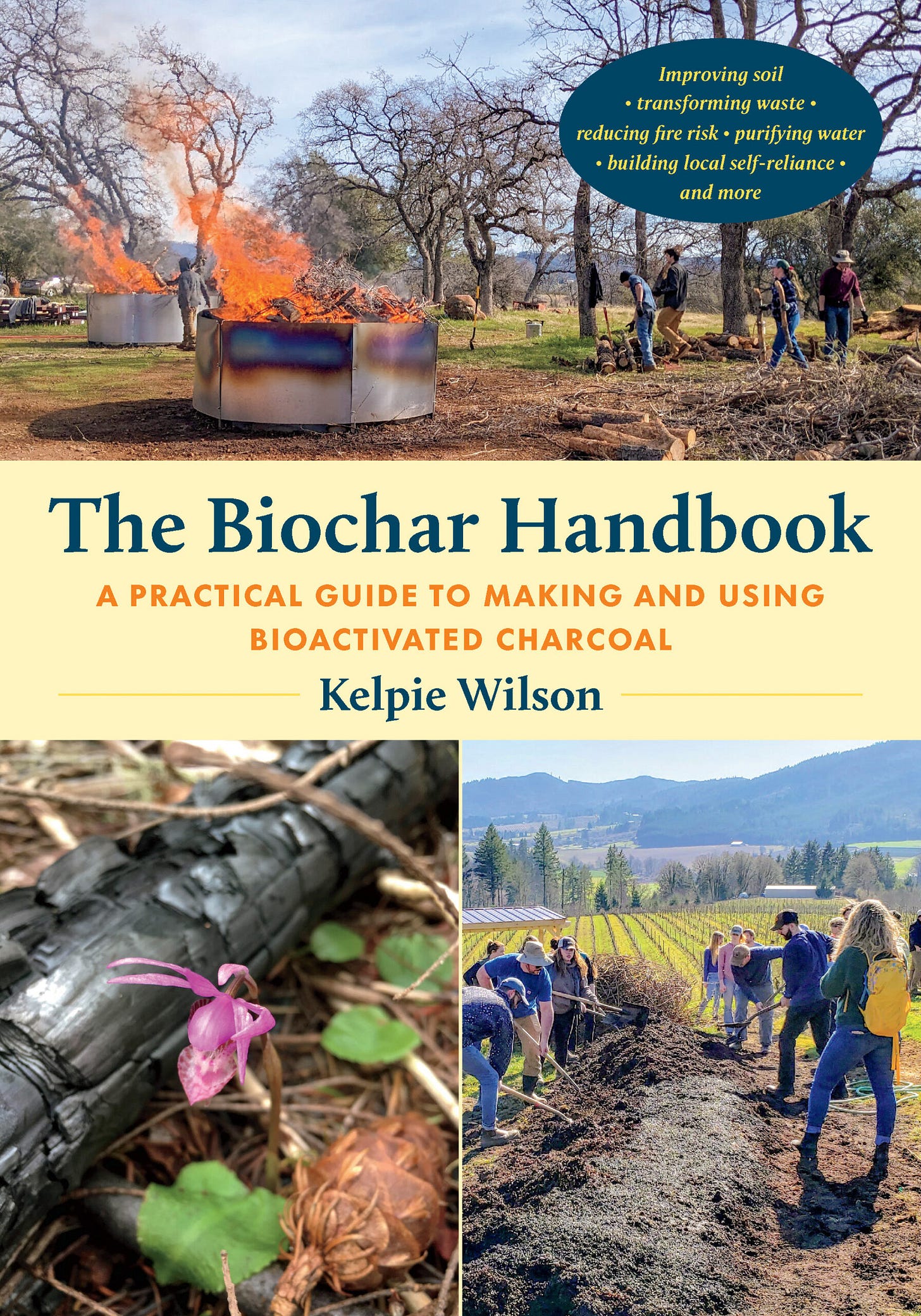The Biochar Prepper
Why you need biochar to be prepared for a resource-constrained future
Carbon is the foundation of Life
The sixth element defines organic chemistry and life itself. Carbon is a shapeshifter, taking on many forms, and combining with other elements in infinite ways. From this infinity of shapes comes biological diversity and the wonders of Creation and evolution. Biochar is one of carbon’s most stable forms, and as I will show you, it will become a lifeline in the uncertain times ahead.
Our problem with carbon
Carbon, in its gaseous forms of carbon dioxide and methane, is causing the greenhouse effect. The greenhouse effect keeps our planet habitable by serving as a blanket to hold the sun’s warmth against the absolute zero of outer space. But too many blankets can put us in a sweat. We are not sure yet how much of a problem we have with excess carbon in the atmosphere, but we can be absolutely certain that we have a very serious problem with not enough carbon in our soils. Most of our agricultural soils are severely depleted of carbon, leaving them dry and lifeless. Chemical agriculture uses soil only as a substrate to hold up plants that are fed and tended with chemicals. Biochar restores life to soil by converting atmospheric carbon to soil carbon. Anybody can get involved in this process of soil building and planet saving. Everybody who can should get involved in making and using biochar for their own food security and resilience.
I wrote The Biochar Handbook to share what I have learned with you
I first heard about biochar back in 2006 when it was known only as Terra Preta, the black soil of the Amazon, clearly created by indigenous humans over thousands of years. Soil scientists were getting excited about these remarkable soils and telling the world. I heard the message and that launched me into a full-time career as a biochar advocate, experimenter, inventor, and consultant. The Biochar Handbook (Chelsea Green, 2024) is a record of what I have learned, including biochar kiln design principles (my degree and background are in mechanical engineering) and many recipes for making and using biochar in compost, gardens, sanitation systems, and health care. I pay special attention to forests, the source of biomass that I use to make biochar. When we remove biomass from forests, we have to be very careful to protect and regenerate all of the components of forest ecosystems, including the soils, the understory, and the water cycle.
You can order The Biochar Handbook at many online booksellers. Here is a link:
I keep learning more about biochar and soil and this is where I will share new discoveries
I grow food and I help forest managers make biochar as part of forest health treatments. I work with many partners all over the world developing new techniques. I am glad that I have The Biochar Handbook to share, but I need a place to record my updated knowledge, and to hear back from others who can help me understand new developments by sharing their experiences. I expect to post something new at least once a week. I look forward to your questions and comments and I will respond as I am able. Please subscribe!
Please subscribe to the Biochar Prepper
The information I share in The Biochar Handbook and in this Biochar Prepper substack should be of interest to anyone who gardens, farms, raises animals, manages forests, or manages waste, at any scale — from a household to a city. It will also be helpful for those who are not directly involved with any of these activities, but who want to understand the promise and potential of biochar to fix our relationship to the four elements of fire, water, earth, and sky, as we continue our journey here on planet Earth.
And don’t forget to share this post with others who will find it interesting. Thanks!



Thank you Kelpie for putting together this book, very well done! Hope to keep learning from you as well as others.